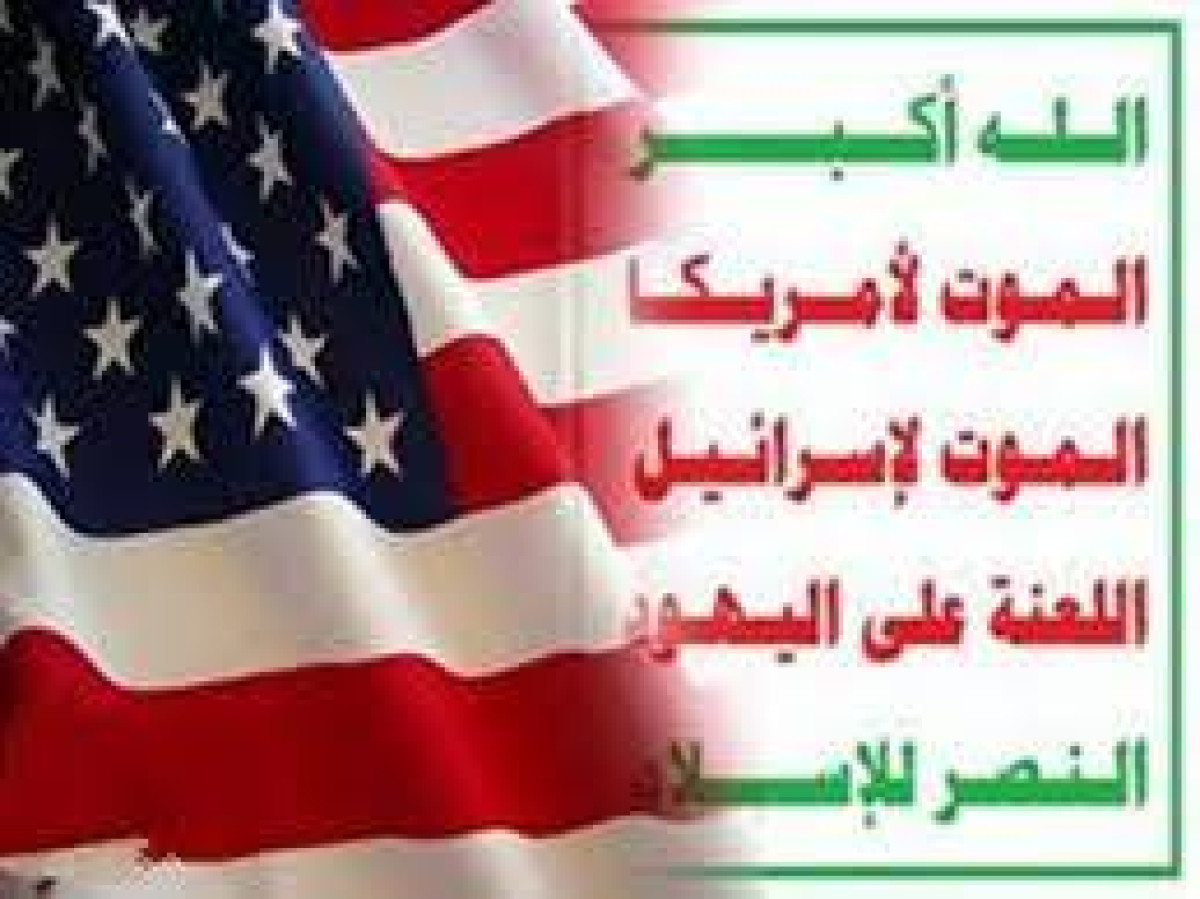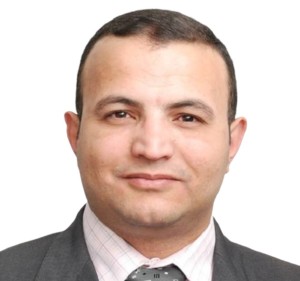Examining Houthis' Advance Messages: Motives Behind Their Threat to Intervene in the Israel-Hamas War
- 16 Oct 2023


Three days following the commencement of the military operation, denoted "Al-Aqsa Flood," launched by the "Al-Qassam Brigades," the armed faction of the Palestinian Hamas movement, against Israel on October 7, 2023, the Houthi militia entered into the escalating fray unfolded as a result to the surge in hostilities between Palestinian factions and Iran on one side, and Israel and the United States on the opposing side.
During a speech on October 13, Abdul-Malik al-Houthi, the leader of the Houthi militia, issued a stark warning. He conveyed that “should the United States opt for direct intervention in the conflict, the militia would retaliate by initiating marches, deploying missiles, and exploring additional military avenues. He emphasised, "There are red lines when it comes to Gaza." [١]
These statements raise two significant implications: First, the Houthi militia's current policy stance towards the ongoing war between Israel and the Palestinian factions stands in substantial contradiction to the ideological slogans that have historically constituted a foundational tenet of its intellectual structure; This includes the well-known rallying cry “Death to Israel”. The Houthi militia has effectively raised the threshold for transitioning from verbal to military escalation by tethering its intervention to direct U.S. involvement in the war. Notwithstanding the ongoing war, which remains primarily confined to Israel on one side and the Hamas movement and select Palestinian factions on the other, the militia's stance suggests a reluctance to resort to this option immediately. Instead, it endeavours to shift the situation into a subsequent phase contingent on the emergence of specific circumstances and conditions which are not presently in place.
The most glaring instance of this discrepancy between rhetoric and action is evident in Al-Houthi's assertion within the same speech that geographical distances pose a hindrance to the mobilisation of fighters into the conflict zone. This assertion, however, contradicts the prevailing realities on the ground, which indicate that these militias have achieved a proximity as close as feasibly possible. They are often described as "roaming" or "mobile" militias, strategically positioned wherever Iran's interests necessitate their presence. This mirrors the scenario in Syria, where Shiite militias from Afghanistan, Pakistan, and Lebanon actively support the regime of Syrian President Bashar al-Assad. Their substantial contributions have been pivotal in reshaping the balance of power in favour of the latter in recent years.
Second, the militia has not delineated the intended targets for its potential attacks, nor has it specified the geographic extent of its operations. There remains uncertainty as to whether the militia aims to target locations within Israel itself, as various reports suggest that if it enhanced its missile capabilities, with Iran's assistance, such as the "Burkan" missile [2], it may extend its reach to the Israeli port of Eilat; or might the militia deliberately attack American and Israeli target, should they fall within the range of its missiles and drones. This scenario parallels Iran's past actions when it targeted Israeli vessels in proximity to Yemeni territorial waters during previous periods.
In this context, numerous trends contend that these warnings are likely part of a strategy aimed at "showcasing capabilities" or "propaganda" rather than indicating a genuine inclination to participate in the intensifying war between Israel and the Palestinian factions. This interpretation is substantiated by the militia's evident interest in aligning itself with the Iranian stance.
Iran remains resolute in denying its direct involvement in the "Al-Aqsa Flood" operation, with apparent support demonstrated by specific military figures, including Chief of Staff of Iran's Armed Forces Major General Mohammad Bagheri and Advisor to the Supreme Leader for Military Affairs Yahya Rahim Safavi. Nonetheless, on October 10, 2023, coinciding with Al-Houthi's speech on the war, Supreme Leader Ali Khamenei himself was insistent on affirming that "this operation was carried out by Palestinian hands," underscoring that "presuming the participation of non-Palestinian parties in it is a major mistake". [3]
Significantly, the Iranian stance evolved, with the Houthi militia progressively aligning itself with this narrative. Initially, Iran merely disavowed any direct involvement in the military operation initiated by the "Al-Qassam Brigades." However, it subsequently shifted towards issuing warnings regarding the potential adoption of alternative strategies should the current war escalate or broaden in scope.
Iranian Foreign Minister Hossein Amir Abdollahian left open the possibility of a shift in Iran's stance should the war escalate. During his notable visit to Beirut on October 12, he asserted that “in light of the ongoing aggression, war crimes, and the blockade on Gaza, the prospect of opening new fronts remains a viable option” [4].
Several Motives:
The Houthi militia’s eagerness to engage in the current escalation can be attributed to three primary motives:
Considering this backdrop, Iran and these militias perceived the US military manoeuvre as directed not solely at Hamas but also at Iran and Lebanese Hezbollah. This interpretation gained traction, particularly as a growing faction within the United States started levelling direct allegations against Iran, holding it directly accountable for the recent operation executed by the "Al-Qassam Brigades" within Israel.
Indeed, the anti-Iran sentiment escalated to a juncture where, on October 10, 2023, Lindsey Graham, a US Senator from the Republican Party, advocated for a military strike on Iranian oil facilities should Hamas execute the Israeli and American captives it seized during the operation and relocated into the Gaza Strip [5].
The "Hezbollah Brigades" warned Iraq, stating their intention to strike American forces within the country should Washington become directly involved in the escalating war in Gaza. The "Asa'ib Ahl al-Haq" militia further indicated that it might retaliate against American support for Israel. Notably, their prospective targets would not be confined solely to US interests within Iraq but could extend to encompass them across the entire region.
Conditional Considerations
Given the aforementioned, it can be inferred that the Houthi militia's participation in the ongoing military escalation hinges on the presence of particular variables, the detailed discussion of which remains deferred. The extent of Israeli military engagement in the Gaza Strip and the prospective Palestinian and regional ramifications remain uncertain. Furthermore, while demonstrating a commitment to provide substantial military and political backing to Israel, the United States remains intent on affirming its lack of concrete evidence implicating Iran in the "Al-Aqsa Flood" operation.
Furthermore, the Houthi militia's shift towards transitioning from rhetorical to military escalation carries potential costs that should not be underestimated. This move heightens the likelihood of their sites becoming susceptible to US military strikes, reminiscent of October 2016, when the United States conducted missile strikes targeting three coastal radar sites affiliated with the militia along the Red Sea coast on the 12th of October, 2023. This retaliatory action was in response to attacks on the battleship "USS Mason" and other vessels in the Red Sea.
Moreover, this heightened engagement may prompt the administration of US President Joe Biden to reconsider its stance towards the militia. Despite the early decision to delist the militia from the roster of terrorist organisations on February 6, 2021, which occurred within a month of President Biden assuming office on January 20 of the same year, with the aim of facilitating negotiations on the nuclear agreement with Iran (resumed in April of that year), any militant action by the militia could trigger a subsequent escalation of American measures. Such an action would be incongruous with their current interests and strategic calculations. This is particularly significant given Iran's reluctance to expand the scope of the current conflict. Instead, it seeks to confine it within the conflict between Israel and Palestinian factions.
[1] النص الكامل لكلمة عبدالملك الحوثي حول "طوفان الأقصى" والرد الإسرائيلي، سي إن إن، 11 أكتوبر 2023، متاح على الرابط التالي: https://2u.pw/nqPcGHq
[2] مايكل نايتس، نسخة جنوبية عن "حزب الله" في اليمن: تداعيات التحسينات في الصواريخ والطائرات المسيرة الحوثية، معهد واشنطن لسياسة الشرق الأدنى، 1 أبريل 2021، متاح على الرابط التالي: https://2u.pw/2WaTK2O
[3] خامنئي ينفي ضلوع إيران في هجوم "حماس" على إسرائيل، صحيفة الشرق الأوسط، 10 أكتوبر 2023، متاح على الرابط التالي: https://2u.pw/23au5xU
[4] عبد اللهيان يوضح موقف إيران من فتح جبهات جديدة ضد إسرائيل، سكاى نيوز عربية، 12 أكتوبر 2023، متاح على الرابط التالي: https://2u.pw/pkf6fER
[5] إيران تدعم "حماس" وسط تباين داخلي... وتنفي ضلوعها في "عملية الطوفان"، صحيفة الشرق الأوسط، 9 أكتوبر 2023، متاح على الرابط التالي: https://2u.pw/IyJQNeq
[6] نتنياهو: رد إسرائيل على هجوم حماس سيغير الشرق الأوسط، سويس انفو، 9 أكتوبر 2023، متاح على الرابط التالي: https://2u.pw/AQIbt1S
The stated views express the views of the author and do not necessarily reflect the views of the Center or the work team.
Comments